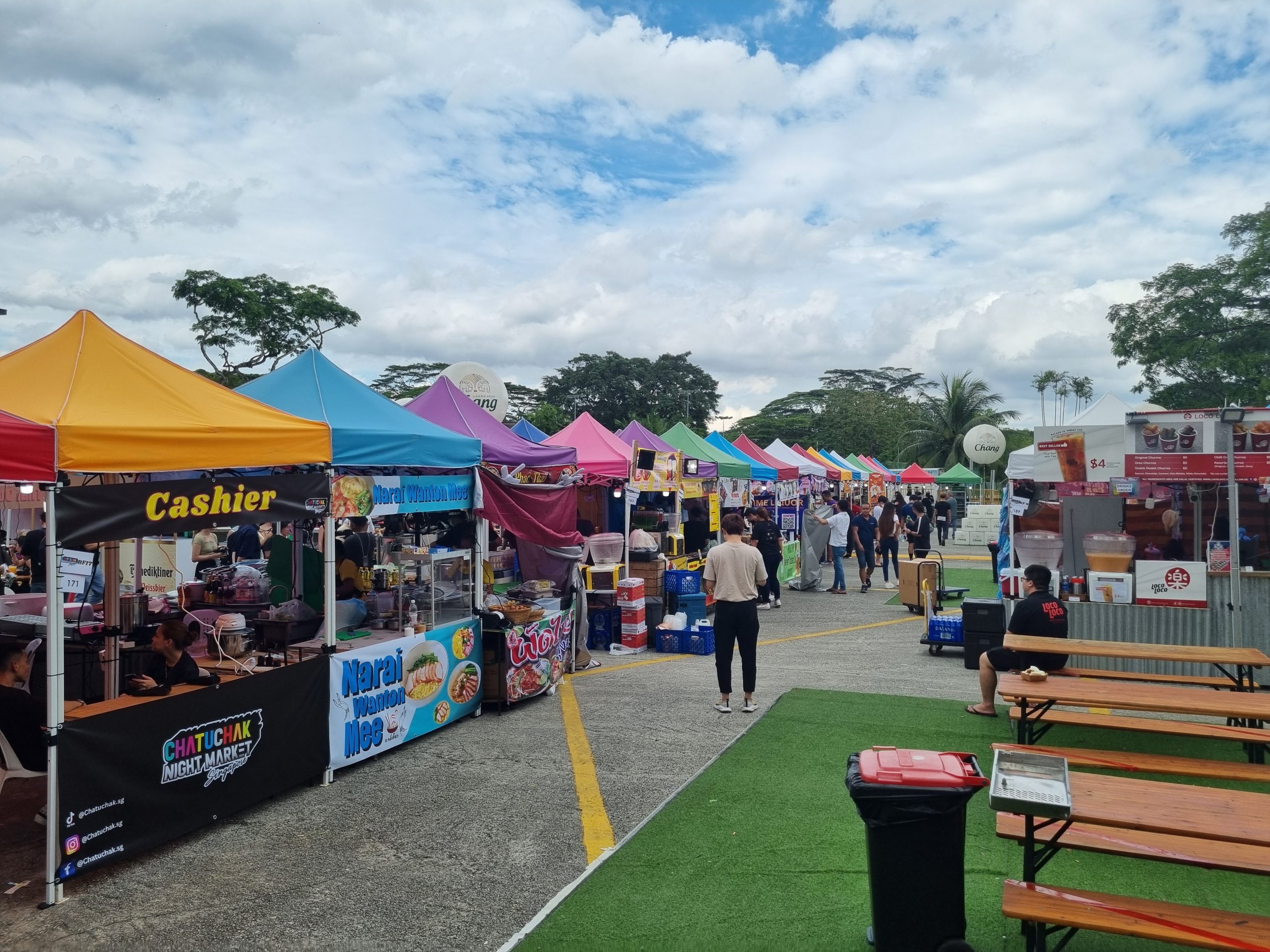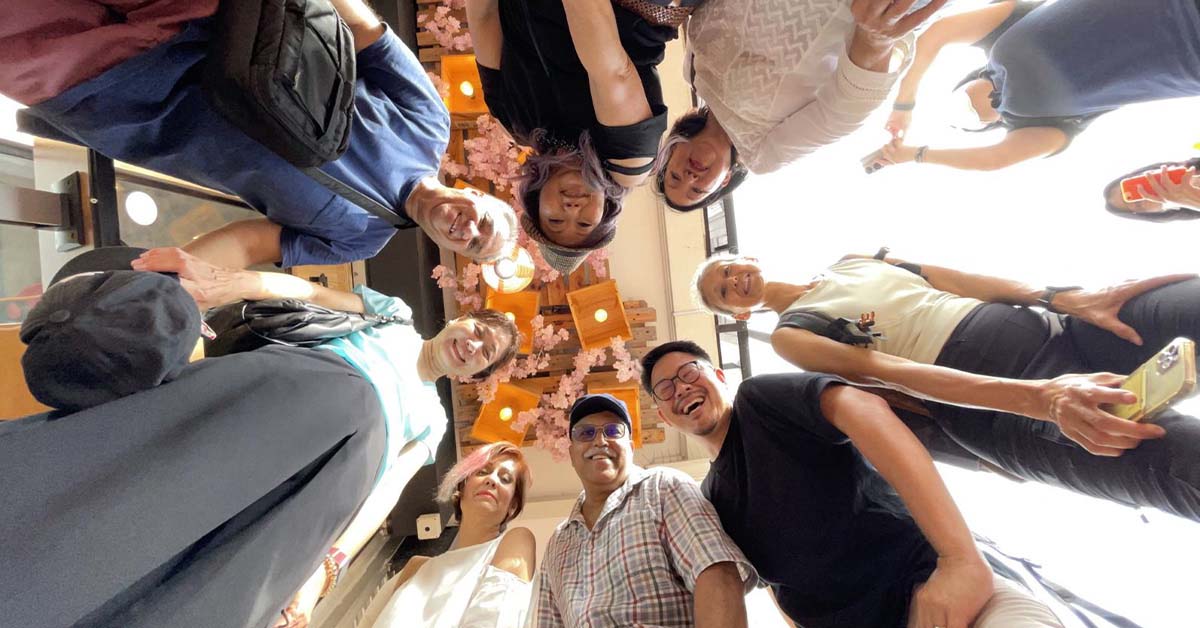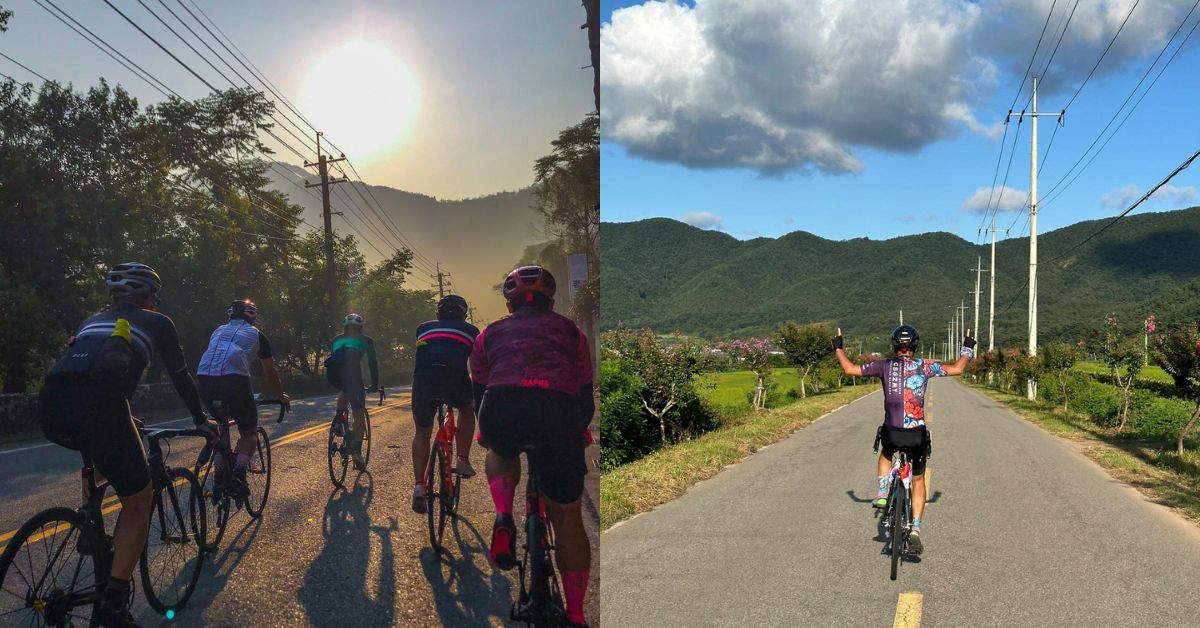
Cycling is an accessible recreational sport that will get you outdoors without breaking a (metaphorical) sweat over price of entry or skill requirements. It’s a pastime well-suited for Singapore’s mostly urban environment and its senior urbanites, with ample opportunity to shift gears and go bicycle touring abroad.
The sport’s prevalence is reflected in national surveys conducted by Sport Singapore, which rank cycling as the fifth most popular sport for those above the age of 60 behind walking, jogging, calisthenics, and exercising with equipment like those found at fitness corners.
Many of these cycling enthusiasts start out on the island’s network of park connectors before graduating to technical mountain biking trails for the adventurous, or asphalt roads for sheer cycling freedom.
And then there are the cyclists who decide to take their two-wheelers further afield, exploring the scenic countryside, mountainous roads and coastline-hugging highways of Taiwan, Korea, Australia, Norway and more.
Travelling has always been in fashion in Singapore. If you combine that with cycling, that’s essentially bicycle touring. With more and more cyclists doing it and influencing their friends, it’s definitely something that will continue to grow,
says Richard Toh, 57, one of Singapore’s growing cohort of globetrotting – or should we say wheeling – silver cyclists.
Advertisement
Cycling picked up during pandemic
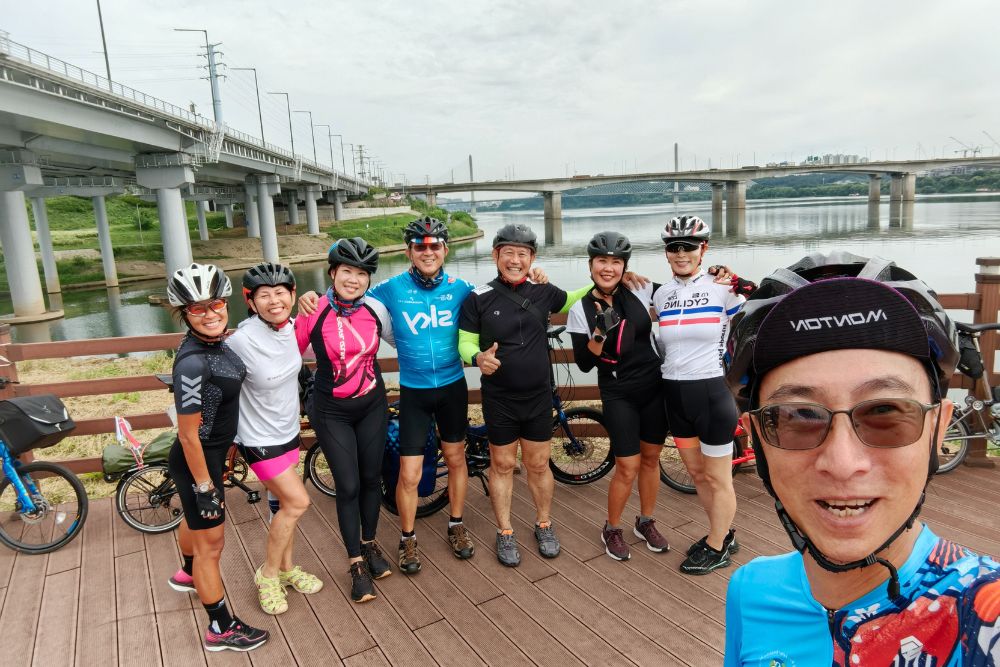
The retired business owner is the founder of Facebook community Cycling SG to Malaysia, which he says is “probably the largest bicycle touring Facebook group in Southeast Asia” having amassed more than 16,000 members since its inception in 2019.
Much of that explosive growth, Richard says, came about during the peri-pandemic biking boom, which saw “many people picking up cycling just to get outdoors and get some fresh air, and ending up enjoying it so much that they stuck with it”.
Once endless loops along West Coast Highway or Seletar West Link began to feel stale, the natural next step for many of these cyclists was to “look overseas for fresh scenery and a new way of riding”.
Of course, that only became a reality after borders reopened and international travel resumed. According to Richard, many cyclists in his Facebook community make a weekly pilgrimage across the Causeway, grouping up based on the kind of riding they’re looking for.
There are those who like to road bike, who favour going faster for longer distances. There are also those who prefer off-roading on a mountain or gravel bicycle. And then there are leisure riders who just want a relaxed ride on their folding bicycles,
says the silver, an avid cyclist since his childhood.
"But going across the border to Malaysia is low-hanging fruit. It’s just to give riders a taste of what it’s like cycling overseas. With such a huge community in Singapore, it’s easy to find someone knowledgeable who is planning a trip to somewhere further or more exciting, who can then bring you along and show you the ropes."
Bicycle touring a way for slow, scenic travel
For those unfamiliar with bicycle touring, it is like a through-hike – meaning that you travel from point A, to B, then C, staying at a different location every day.
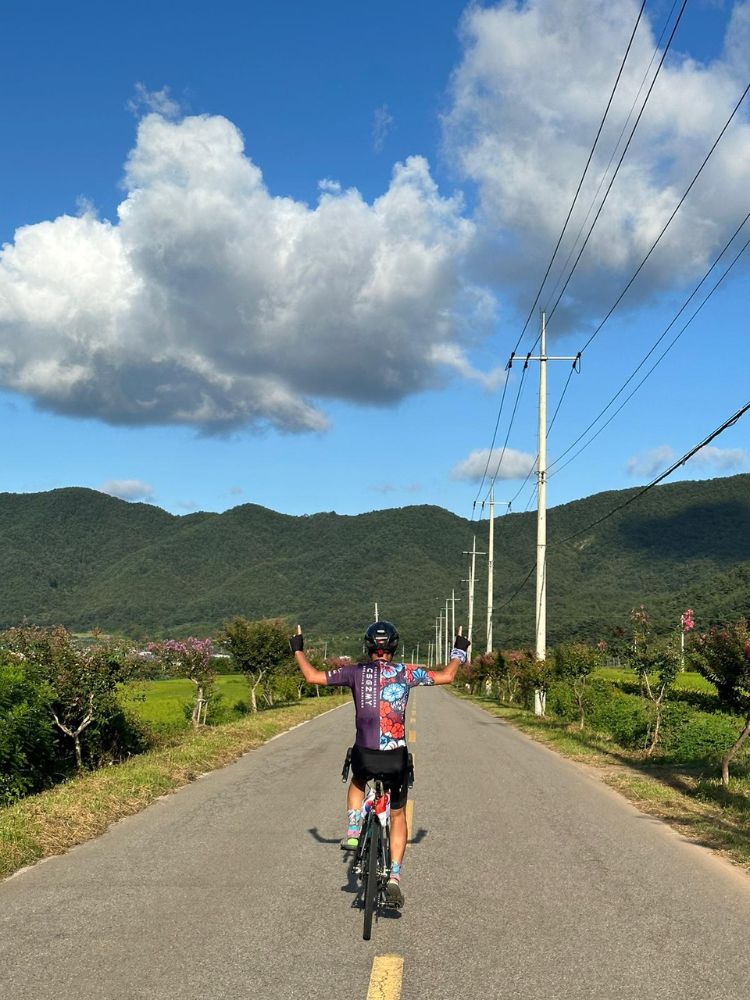
Richard estimates that around 20% of regular overseas bicycle tourers in Cycling SG to Malaysia are silvers aged 50 and up.
It makes sense, he says, as the limiting factor for bicycle touring trips usually isn’t money, but time. Accommodation is generally on the cheaper end, as cyclists typically spend most of their time travelling along rural roads.
If you have just 14 days of leave a year, that’s barely enough for one long ride. On the other hand, if time is not an issue, the sky’s the limit for bicycle touring. Singapore is connected by land to Malaysia, Thailand, Cambodia, all the way up to China and Europe,
says the silver, who himself spends about three and a half months in a year cycling abroad.
Of course, the seasoned biker is quick to clarify that long, arduous rides aren’t the only way to experience bicycle touring.
If it’s your first trip, five to seven days would be comfortable for a start. When you’re bicycle touring, you usually cover long distances of around 100km. Doing that for multiple days on end, especially for those who aren’t well-conditioned to that distance, can wear you out,
Richard Toh adds.
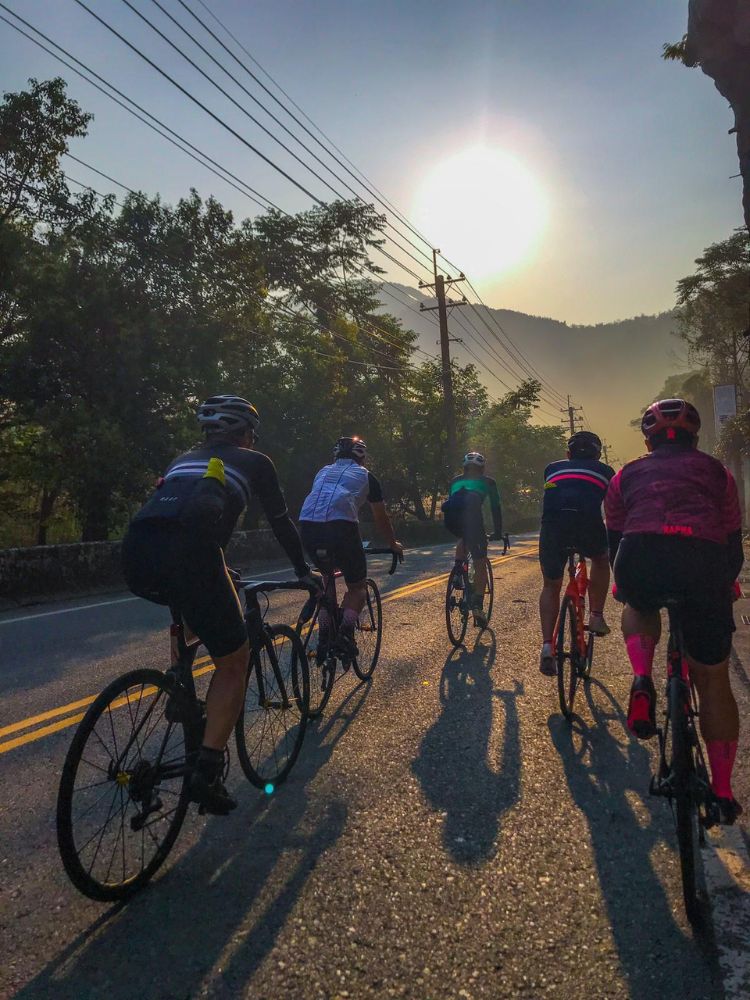
A week is roughly how long other senior cyclists like Harry Soh, a 58-year-old retiree, and Andy Lee, a 50-year-old in IT project management, devote to their bicycle touring escapades.
Even so, all three agree that the time, effort and sweat they’ve invested into overseas cycling trips go on to yield outsized returns in enjoyment.
It’s the same as why anyone would travel overseas, really. You get to see a different place, except now it’s in a different manner, too.
Silver cyclist Harry, who’s been at it for over a decade as a means of keeping fit, says,
Chances are, you’d be cycling on B-roads. These minor roads take you to mountains and coastal towns and other quieter places that you wouldn’t have gone to ordinarily – so you really get to see a different side of a place.
he adds.
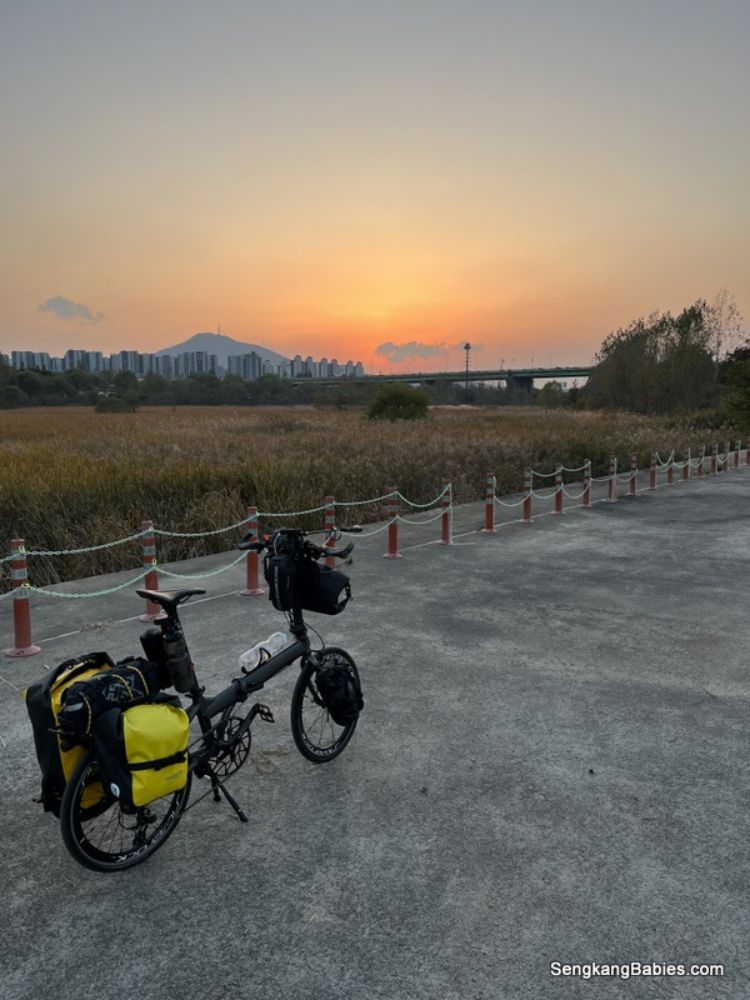
The slower pace of bicycle touring, Harry says, with rest-stops at roadside inns, scenic viewpoints or when nature calls, also facilitate plenty of time to socialise with fellow bikers.
Andy, a fellow member of Cycling SG to Malaysia who picked up the sport during the pandemic, concurs, adding that a big plus of overseas bicycle touring is the opportunity to “enjoy the different cycling cultures of other countries”.
For example, Malaysian drivers are super patient towards cyclists. The Taiwanese are super friendly too – random folks will just say jia you (a Mandarin phrase to cheer people on) to you!
Andy says.
What to know before bicycle touring overseas
Taiwan, Japan and Korea are among the destinations cited by senior cyclists interviewed as ideal spots for a newbie’s first overseas bicycle touring trip, as all three countries offer good infrastructure, great scenery and a temperate climate to boot.
You can choose to bicycle tour as part of an organised tour group or plan the trip yourself. With the former, there’ll often be the added benefit of having a support van that can help carry additional supplies – though of course, the costs will be correspondingly higher.
Otherwise, you’ll have to cycle with all your supplies stuffed into saddle bags, frame bags or panniers attached to the sides of your bicycle.
As with hiking, this means that you’ll need to clock additional mileage with the added weight to condition yourself before heading overseas – especially if you plan to ride on a heavier, but sturdier, stainless steel frame bicycle instead of a lighter carbon-fibre one.
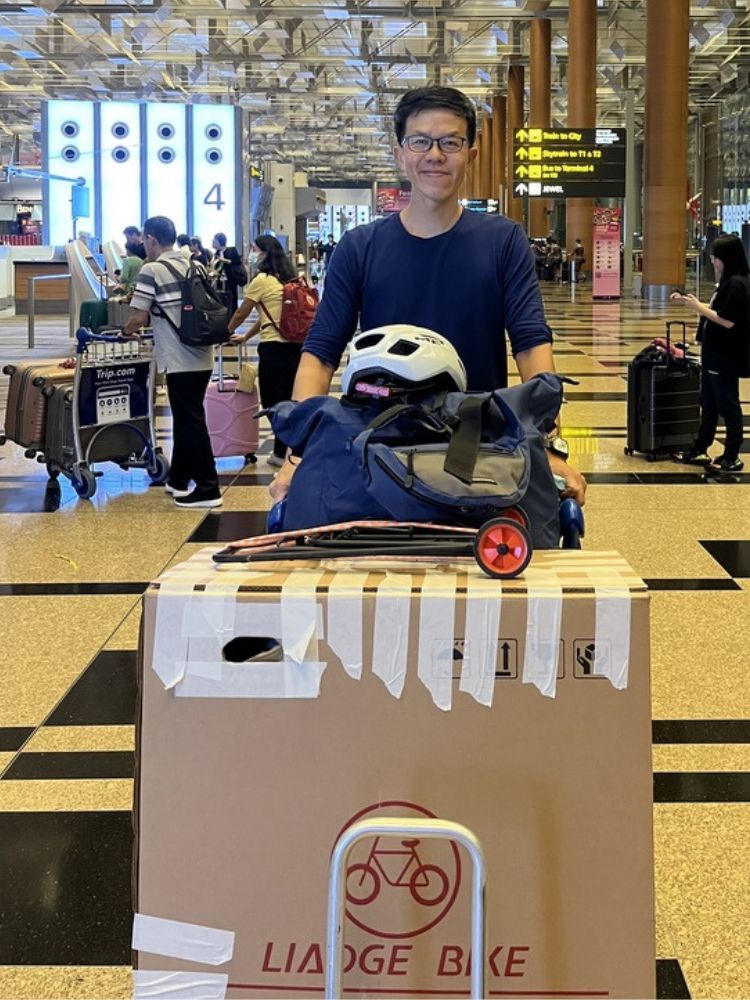
Richard says that a multi-month getup can weigh upwards of 30kg, compared to roughly half that for “bike-packers” looking to cycle short and fast.
The weight doesn’t just affect how fit you have to be – it might also lead to extra costs at the airport, depending on whether you opt to store your bicycle, dismantled for travel, in a 15kg hard case.
A hard case offers more protection. That said, in all my years, I’ve not had a problem packing it into the factory cardboard box it came in,
says Richard, founder of Cycling SG to Malaysia.
Bicycle touring travel tips
Here’s a handy cheat sheet compiling recommendations from the three senior cyclists:
- A repair kit, and the knowledge of how to use it. On longer trips, consider bringing a spare tire and a hand pump
- A first aid kit, as you’ll often be travelling in remote locations
- Extra water bottles to stay hydrated, as water stops might be few and far between
- Easy-to-don protection from the cold and wind, when travelling in temperate countries
And these are the things to consider when planning your trip:
- Get conditioned, as most rides in Singapore are along straight, even roads. “50km can feel like 100km in Malaysia,” says Andy
- Find a group with a similar speed to you. You don’t want to be too fast, or too slow
- Plan plenty of buffer time, especially since most rural roads aren’t as well-lit as Singapore’s
- Read up on the traffic laws of the country to know whether bicycles belong on the left or right of the road, or in a dedicated bicycle lane
- E-bikes are available too (especially in Europe and America, says Harry) if you’d like to experience the thrill of bicycle touring in this fashion.
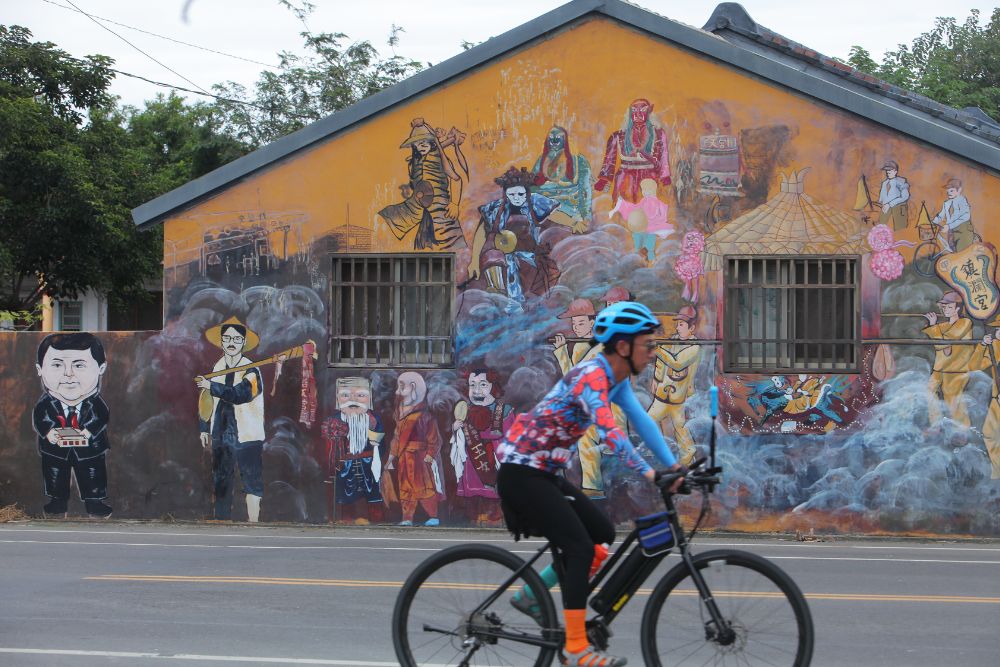
Above all, Richard avers that the main takeaway from bicycle touring trips shouldn’t be the length of road travelled, but the friendships and memories made.
Don’t push yourself too hard. You don’t want to be aggressive and try to cover an ambitious distance only to have to force yourself every day. It’s better to take it slow and enjoy the vistas and distance that you managed to cover.
He says,

